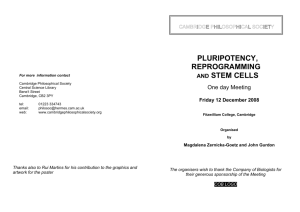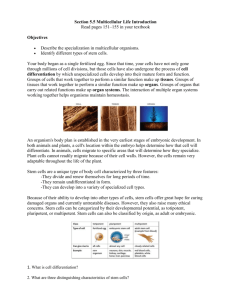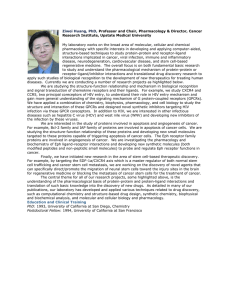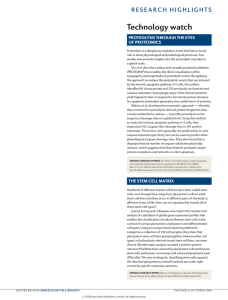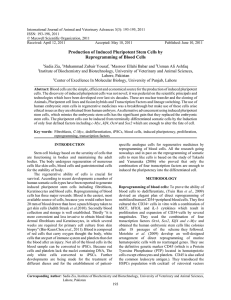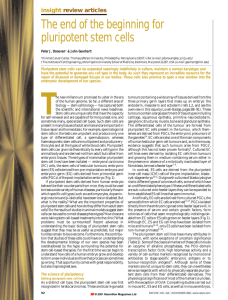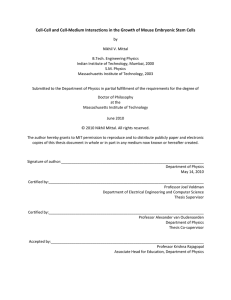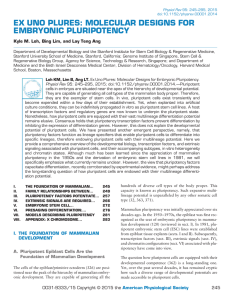Pg 2
advertisement
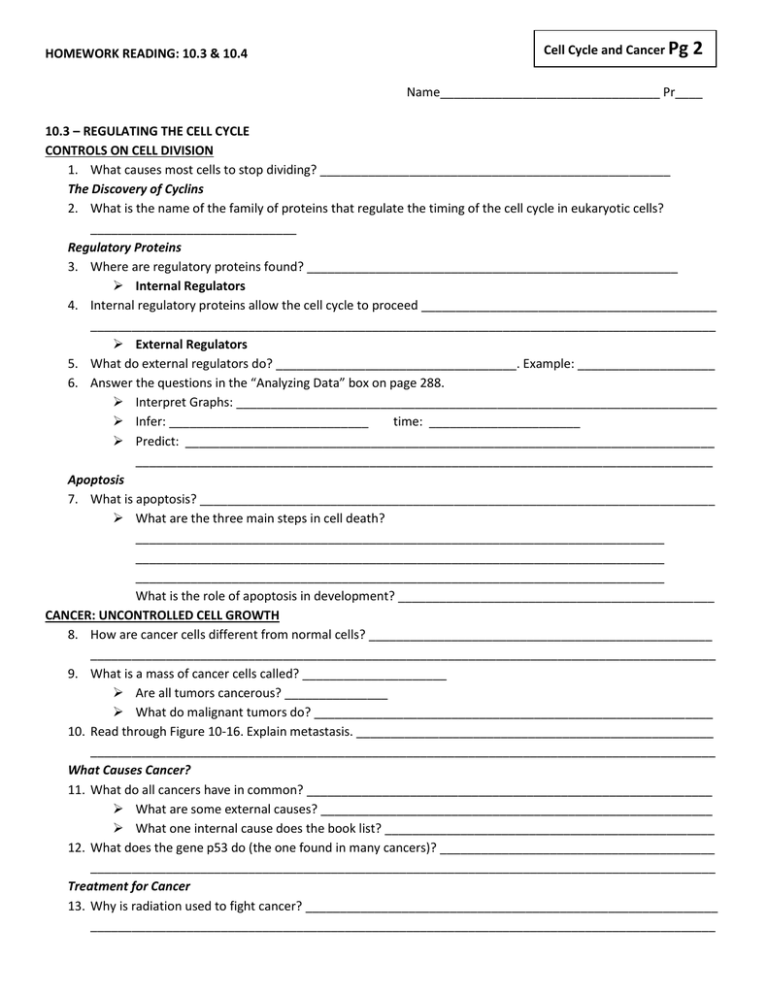
HOMEWORK READING: 10.3 & 10.4 Cell Cycle and Cancer Pg 2 Name________________________________ Pr____ 10.3 – REGULATING THE CELL CYCLE CONTROLS ON CELL DIVISION 1. What causes most cells to stop dividing? ___________________________________________________ The Discovery of Cyclins 2. What is the name of the family of proteins that regulate the timing of the cell cycle in eukaryotic cells? ______________________________ Regulatory Proteins 3. Where are regulatory proteins found? ______________________________________________________ Internal Regulators 4. Internal regulatory proteins allow the cell cycle to proceed ___________________________________________ ___________________________________________________________________________________________ External Regulators 5. What do external regulators do? ___________________________________. Example: ____________________ 6. Answer the questions in the “Analyzing Data” box on page 288. Interpret Graphs: ______________________________________________________________________ Infer: _____________________________ time: ______________________ Predict: _____________________________________________________________________________ ____________________________________________________________________________________ Apoptosis 7. What is apoptosis? ___________________________________________________________________________ What are the three main steps in cell death? _____________________________________________________________________________ _____________________________________________________________________________ _____________________________________________________________________________ What is the role of apoptosis in development? ______________________________________________ CANCER: UNCONTROLLED CELL GROWTH 8. How are cancer cells different from normal cells? __________________________________________________ ___________________________________________________________________________________________ 9. What is a mass of cancer cells called? _____________________ Are all tumors cancerous? _______________ What do malignant tumors do? __________________________________________________________ 10. Read through Figure 10-16. Explain metastasis. ____________________________________________________ ___________________________________________________________________________________________ What Causes Cancer? 11. What do all cancers have in common? ___________________________________________________________ What are some external causes? _________________________________________________________ What one internal cause does the book list? ________________________________________________ 12. What does the gene p53 do (the one found in many cancers)? ________________________________________ ___________________________________________________________________________________________ Treatment for Cancer 13. Why is radiation used to fight cancer? ____________________________________________________________ ___________________________________________________________________________________________ 14. Why is chemotherapy used to fight cancer? _______________________________________________________ 15. Why are there side effects to both radiation and chemotherapy? ______________________________________ 10.4 – CELL DIFFERENTIATION FROM ONE CELL TO MANY Defining Differentiation 16. What is a differentiated cell? ___________________________________________________________________ Mapping Differentiation 17. In some organisms, is the cell’s role rigidly determined at some specific point in development? _____________ 18. In mammals, is there some point where a cell can no longer become another kind of cell?______________ STEMS CELLS AND DEVELOPMENT 19. A cell, such as a newly fertilized egg, is totipotent. What does that mean? _______________________________ ___________________________________________________________________________________________ 20. Through how many cell divisions can fertilized eggs go before they lose their totipotency? __________________ Human Development 21. Within four days of fertilization, human embryos form a blastocyst. Describe a blastocyst. __________________ ___________________________________________________________________________________________ _ Which group attach the embryo to its mother? ____________________________ Which group becomes the embryo? _____________________________________ Which cells are pluripotent? ____________________________ What does pluripotent mean? ____________________________________________________________ Stem Cells 22. What are stem cells? __________________________________________________________________________ Embryonic Stem Cells Adult Stem Cells 23. How are multipotent stem cells different from pluripotent stem cells? __________________________________ ___________________________________________________________________________________________ FRONTIERS IN STEM CELL RESEARCH Potential Benefits 24. What is the potential medical benefit of stem cell? __________________________________________________ ___________________________________________________________________________________________ Ethical Issues 25. What might we eventually be able to do to avoid the ethical issues of embryonic stem cell research? _________ ___________________________________________________________________________________________


